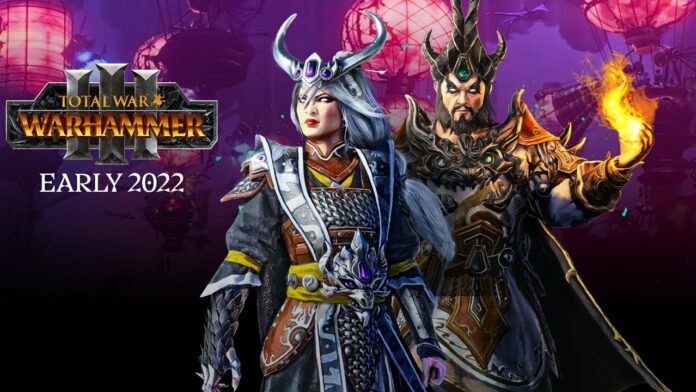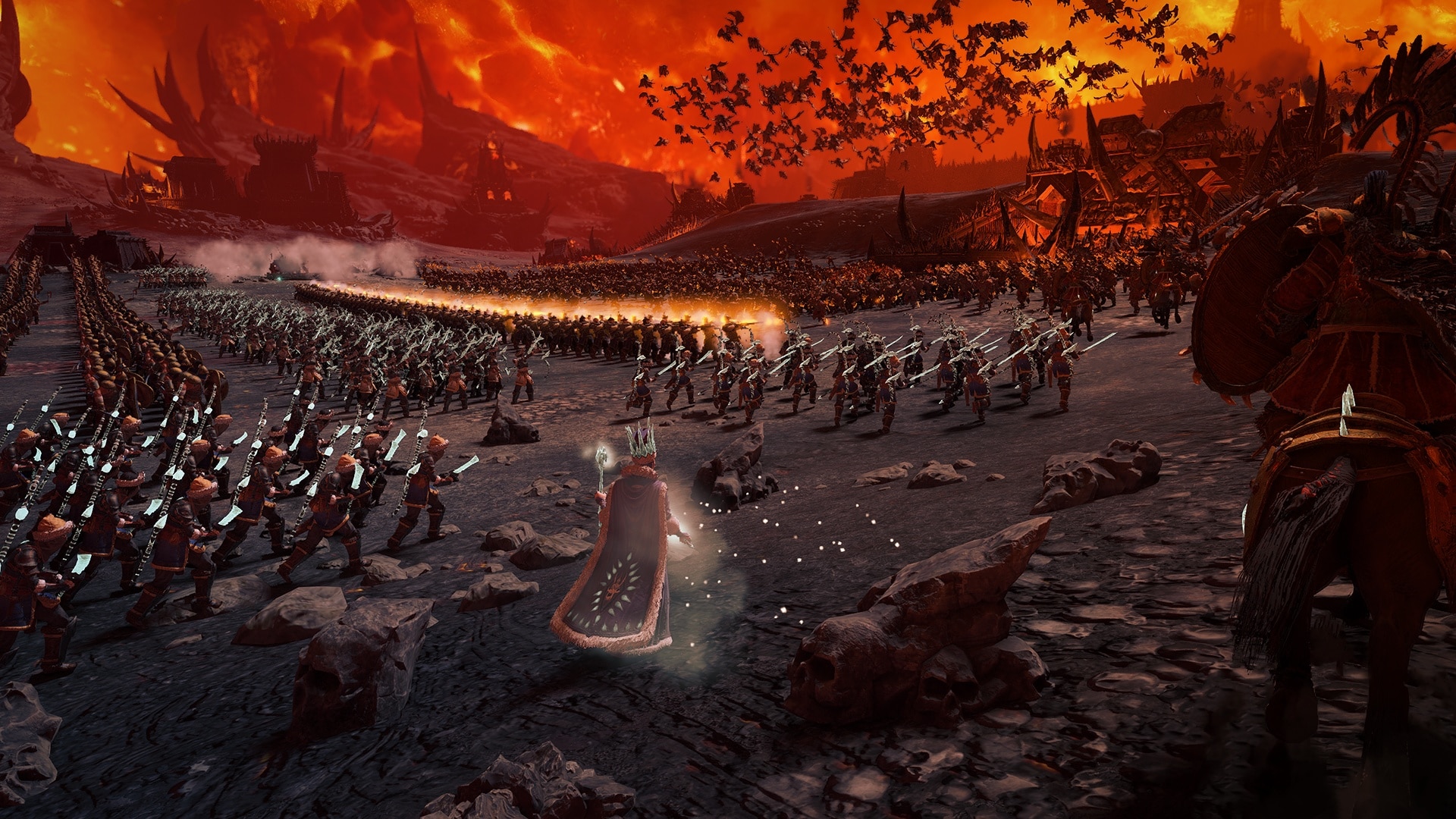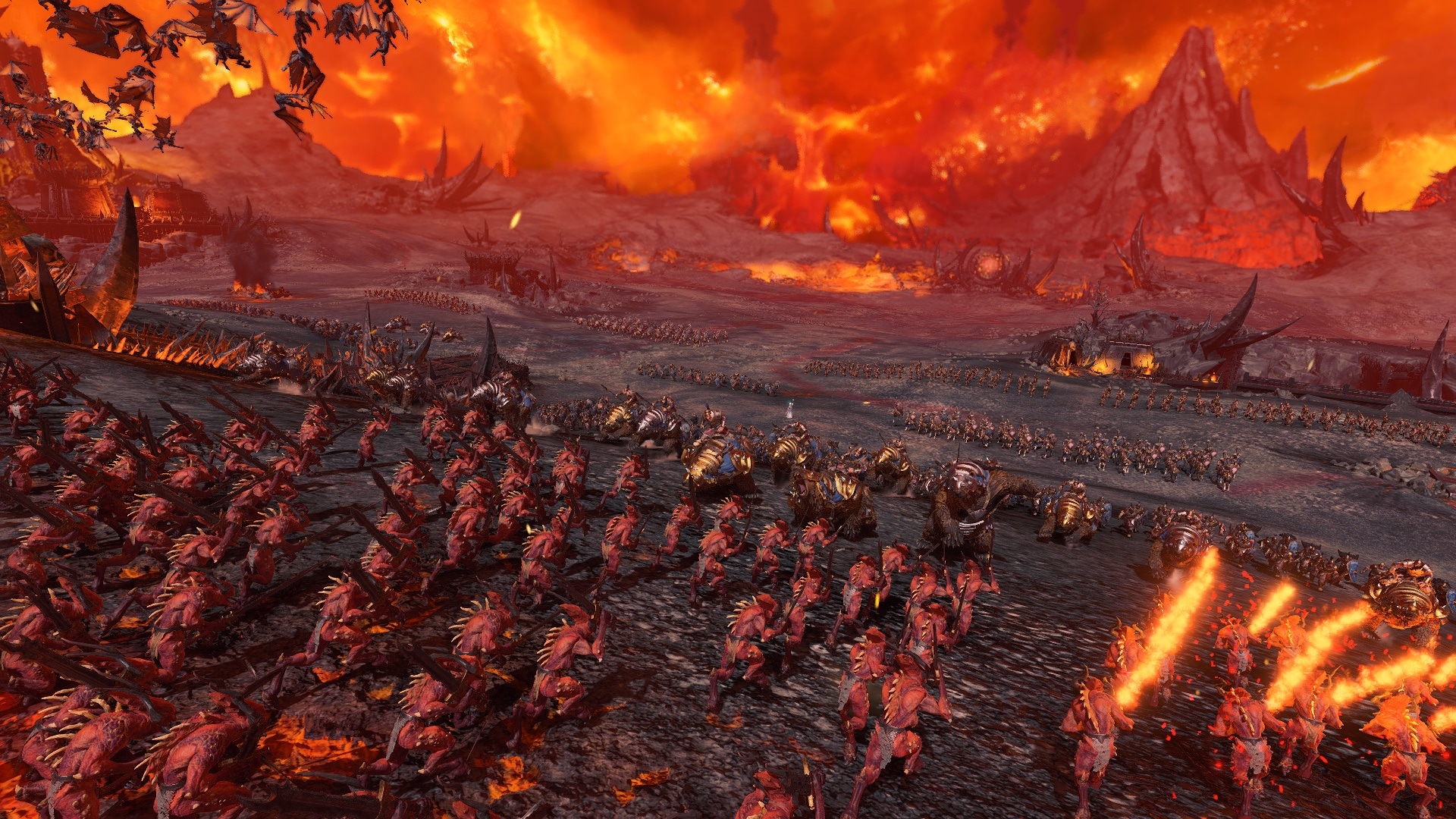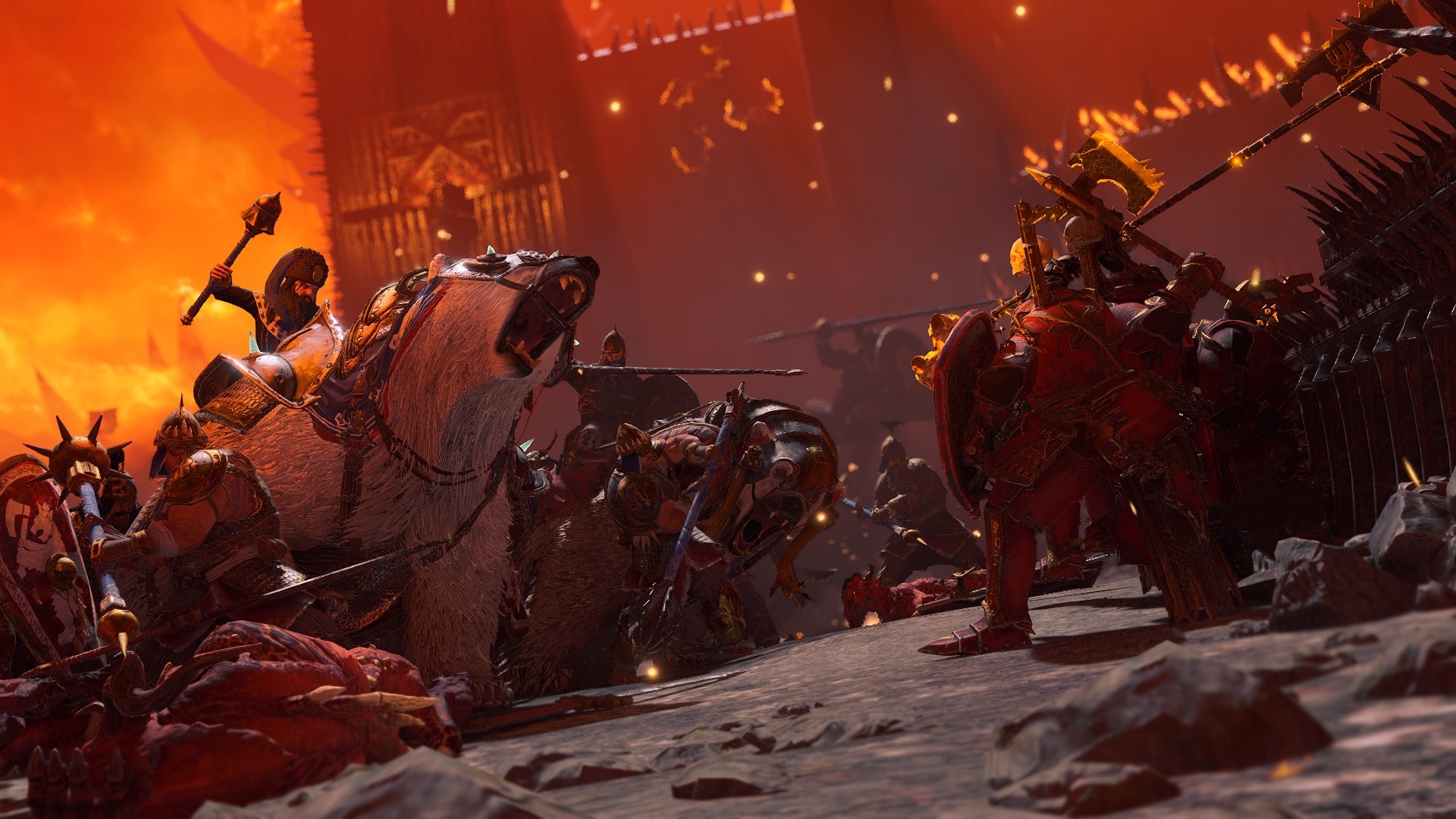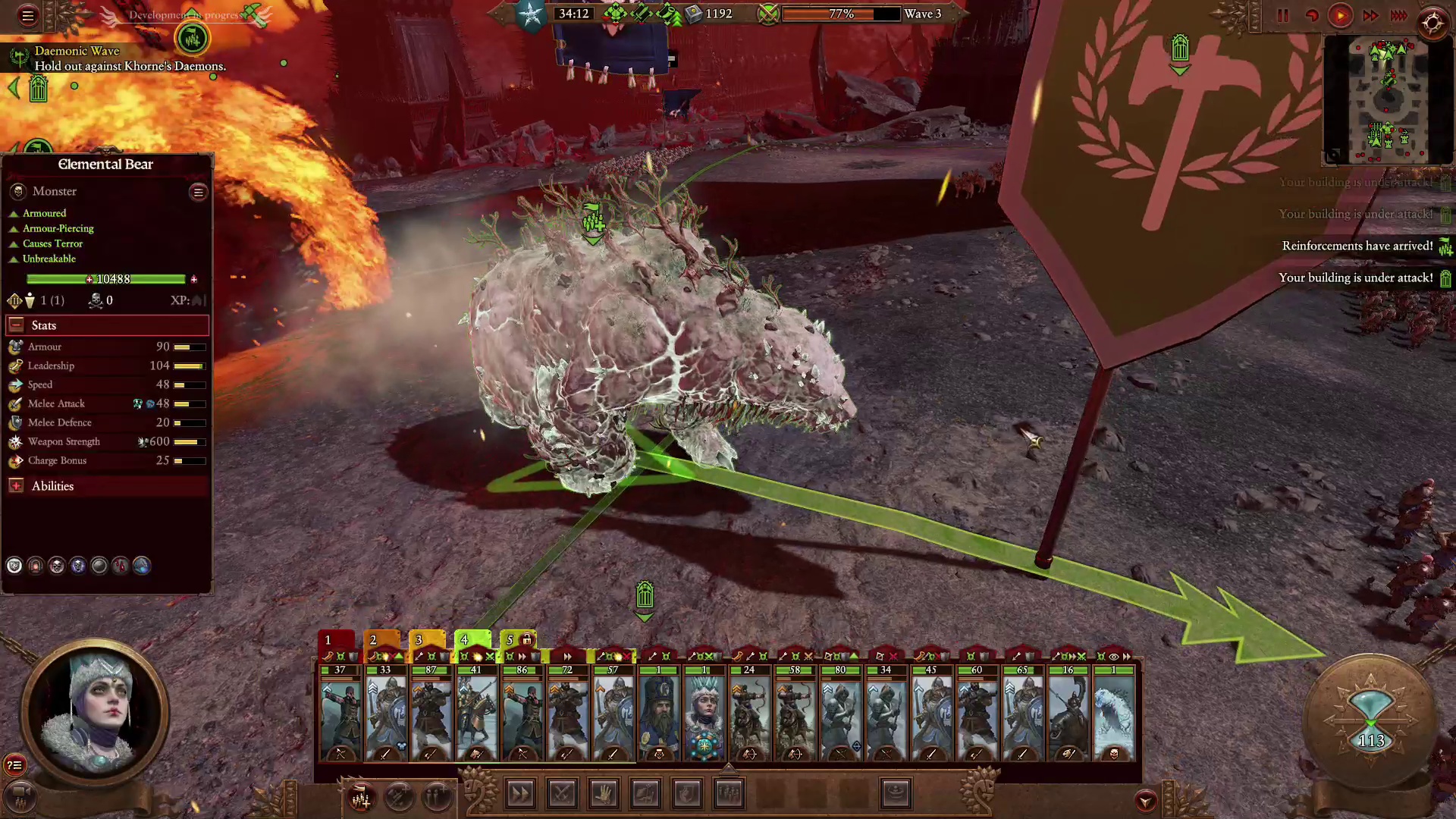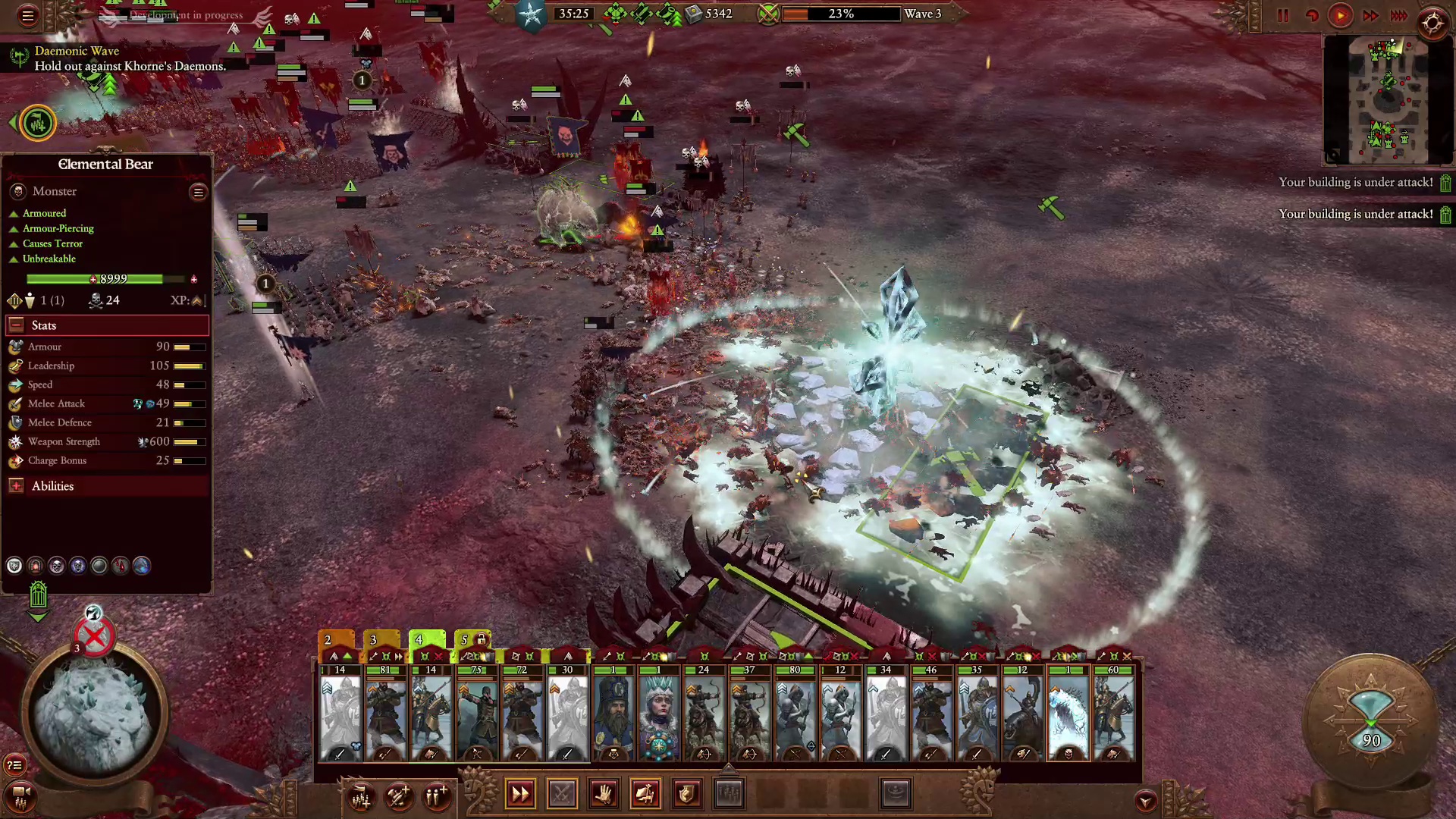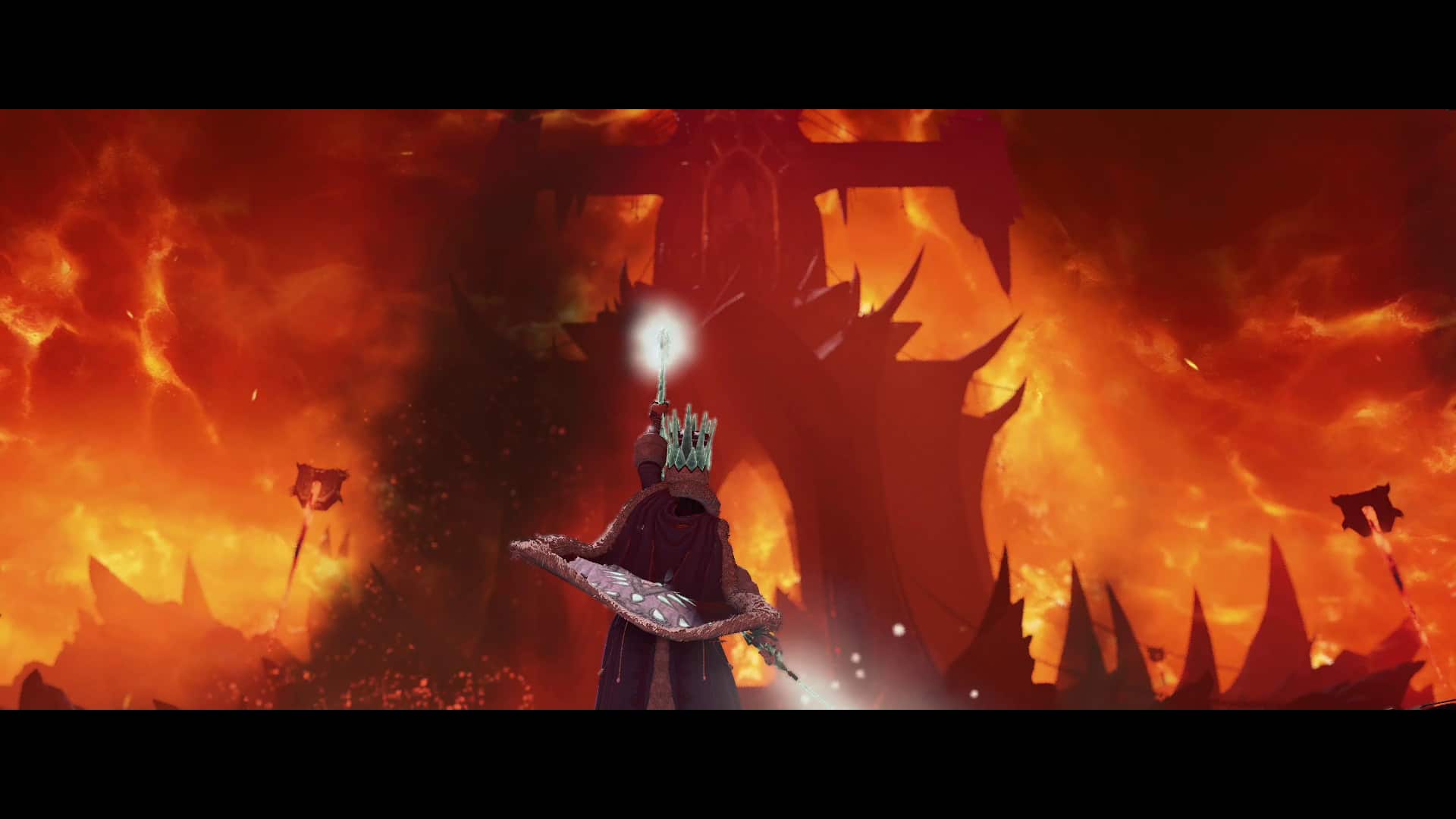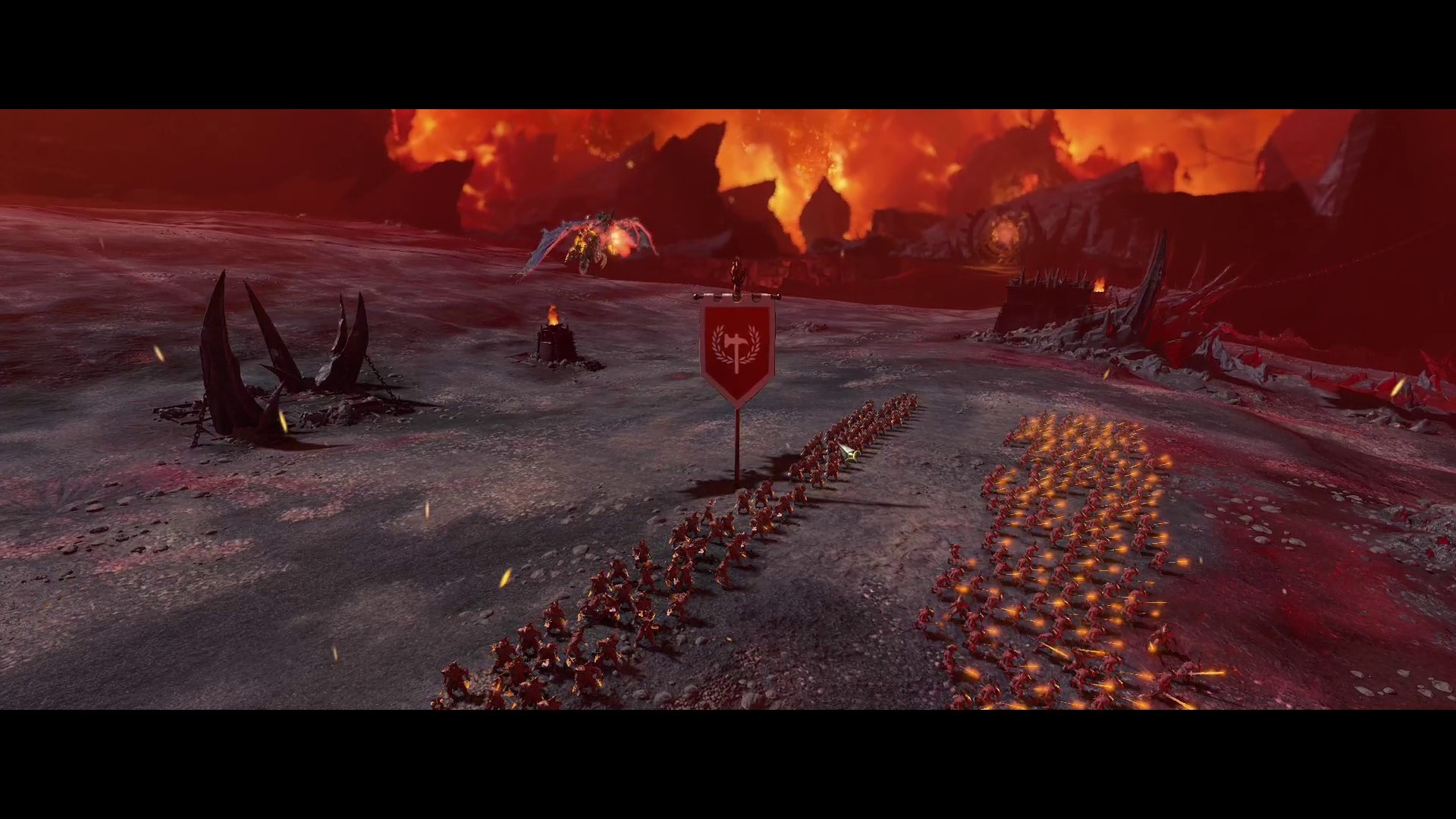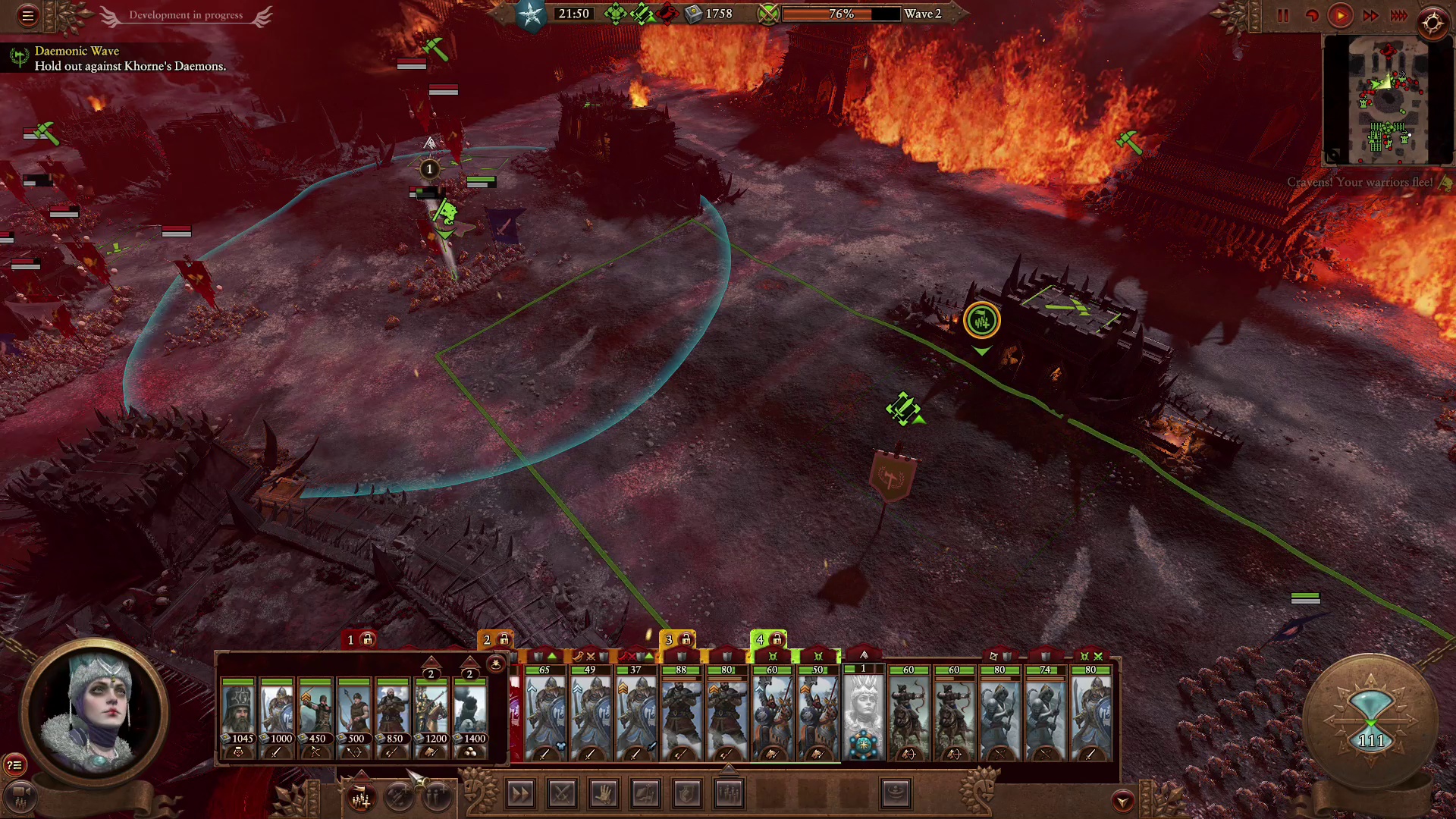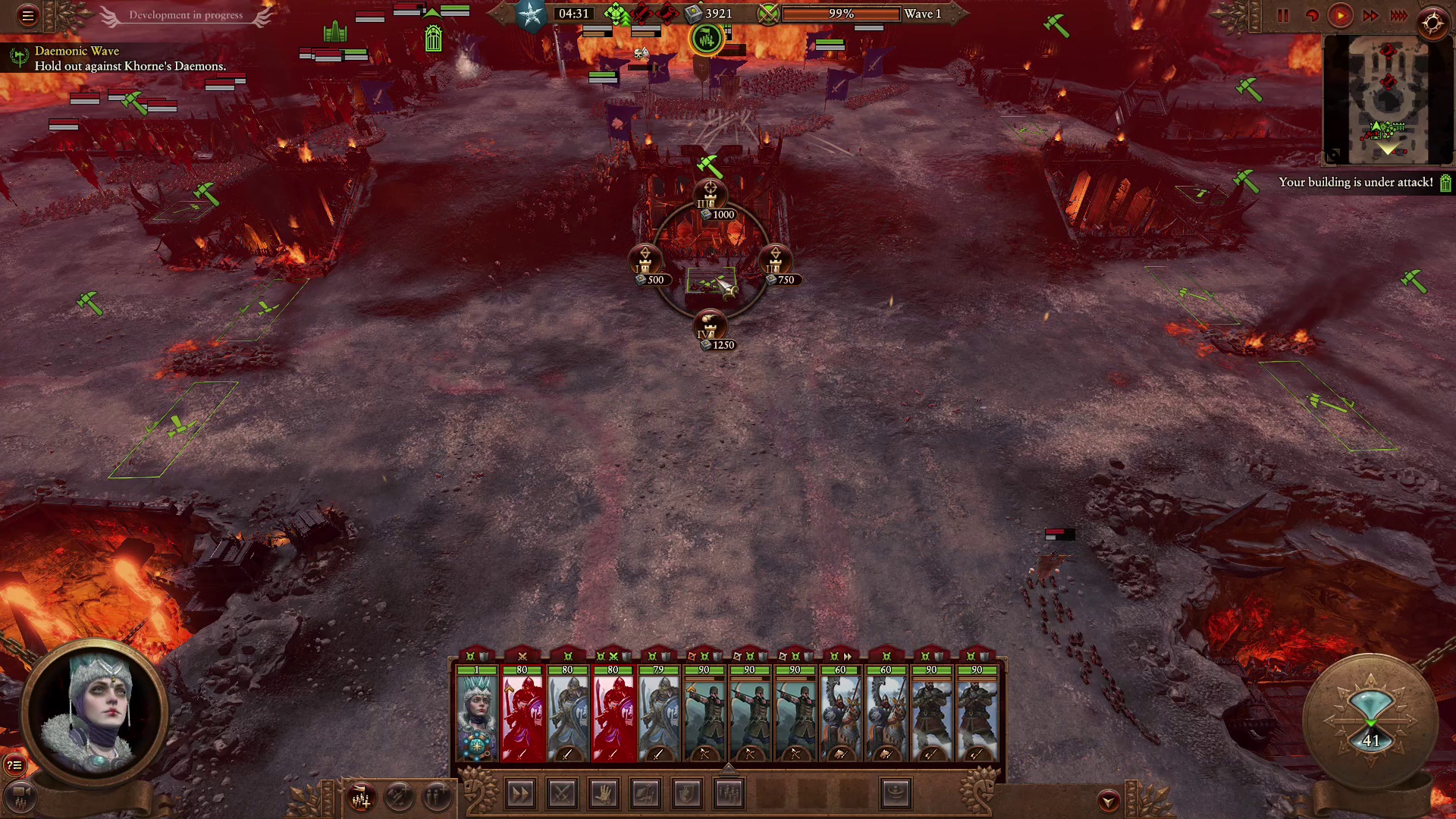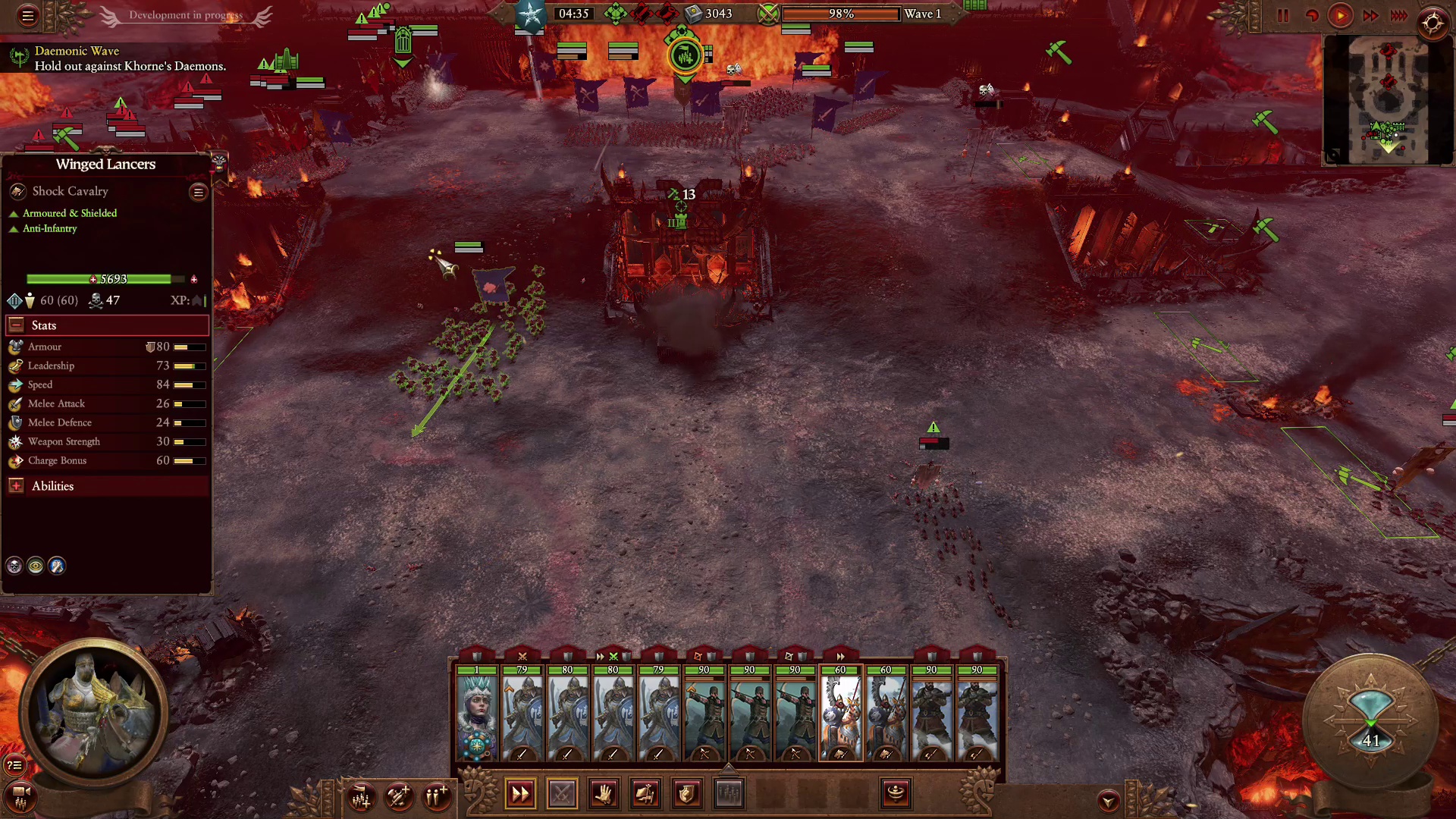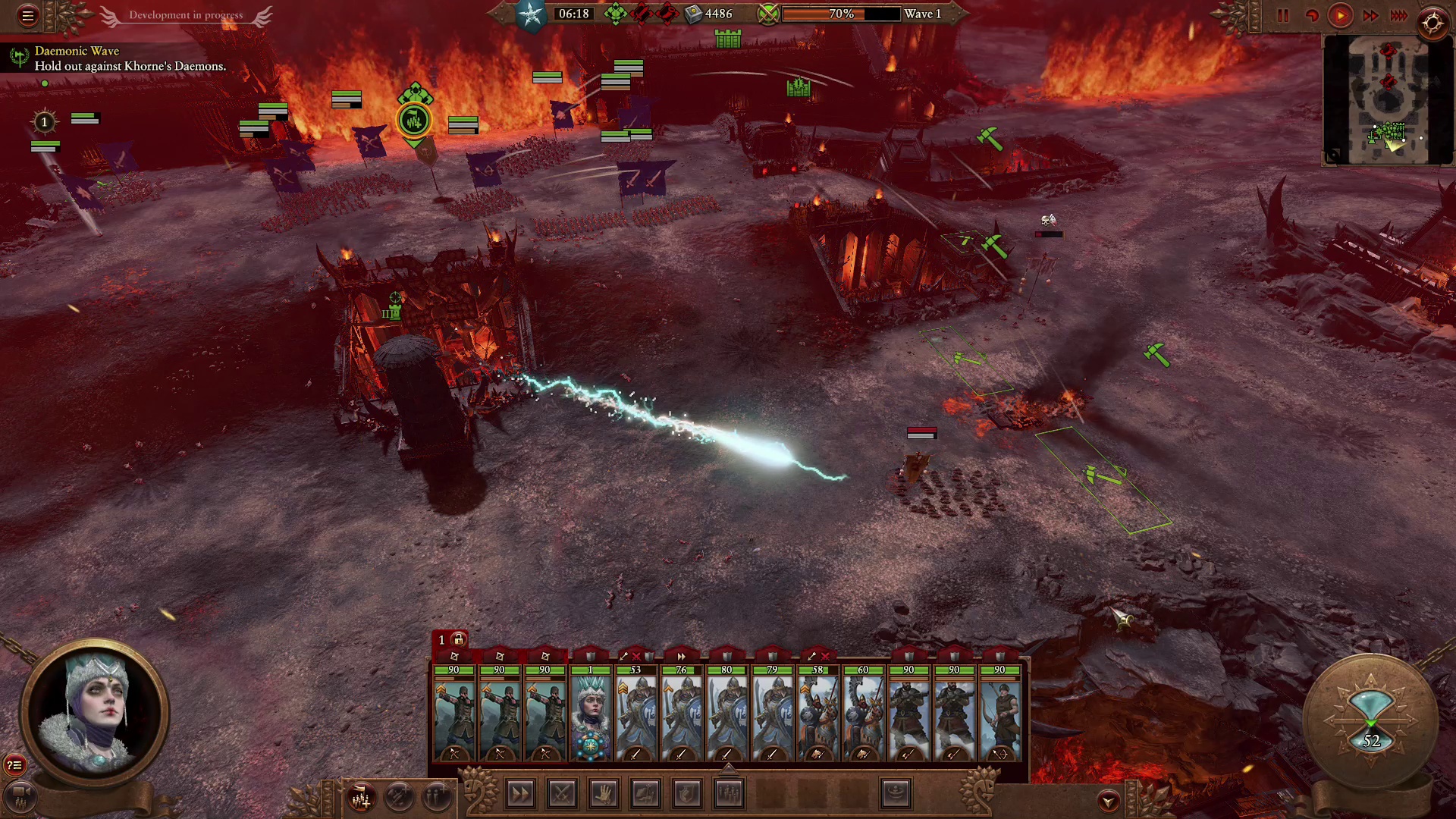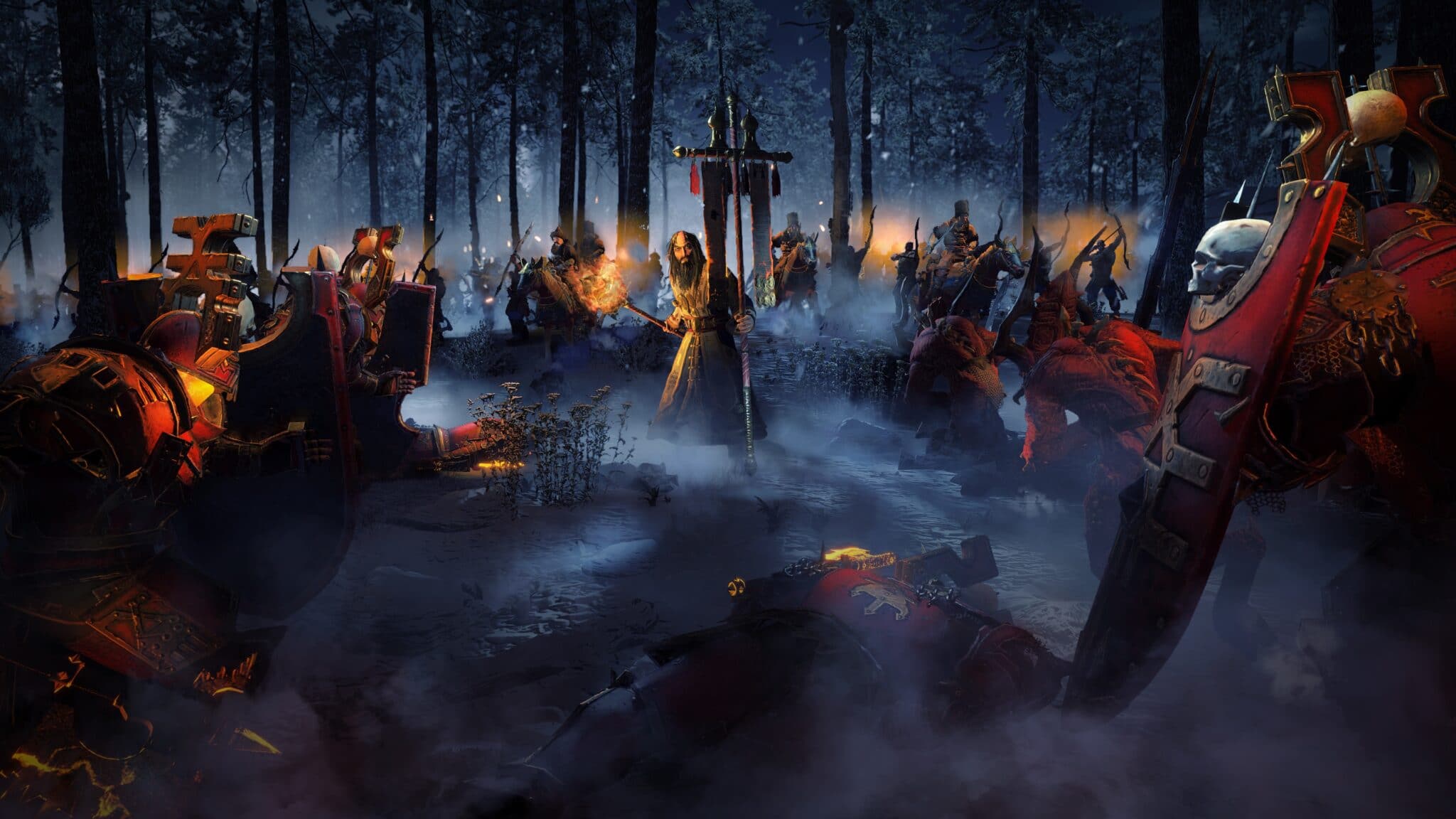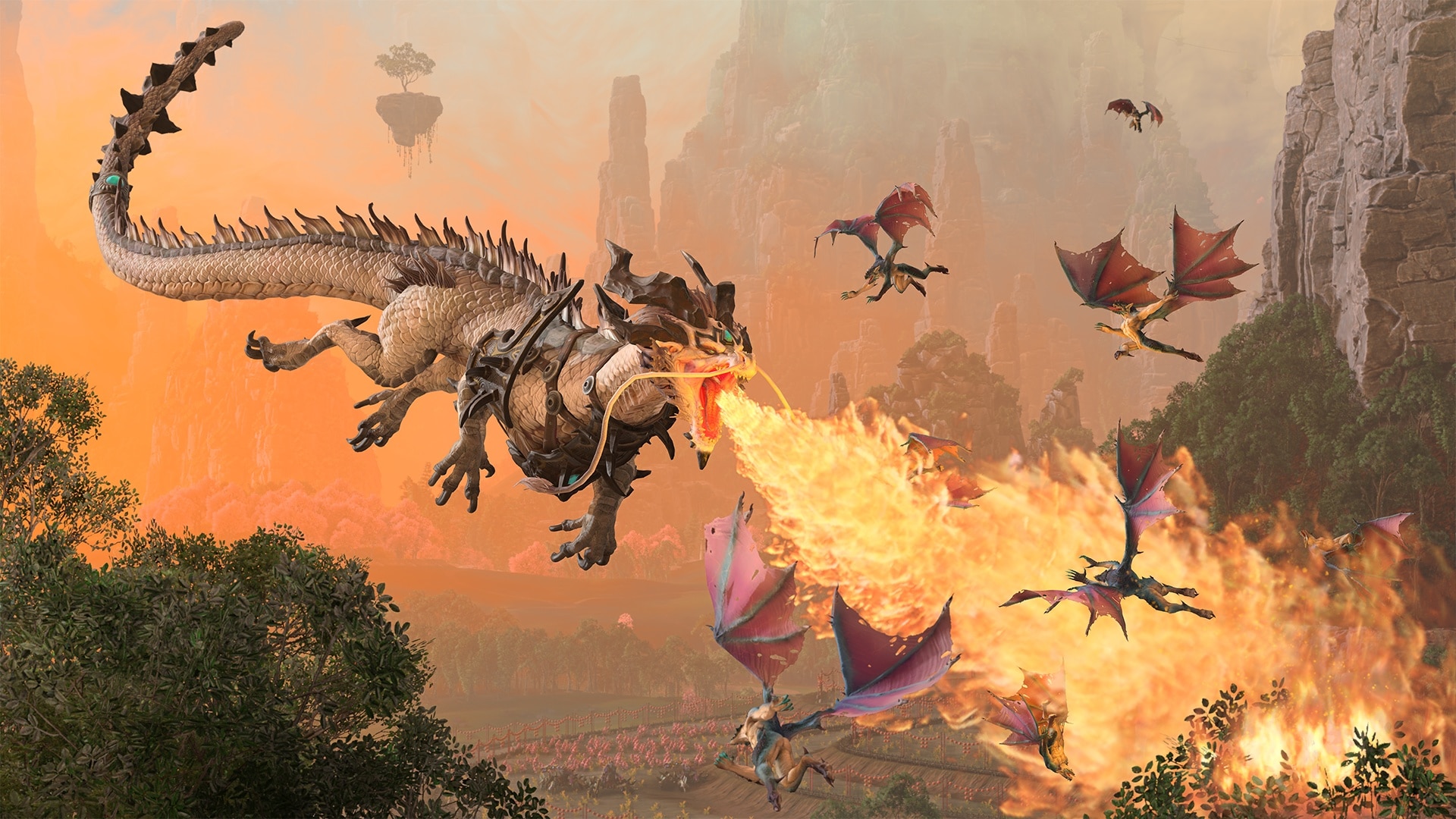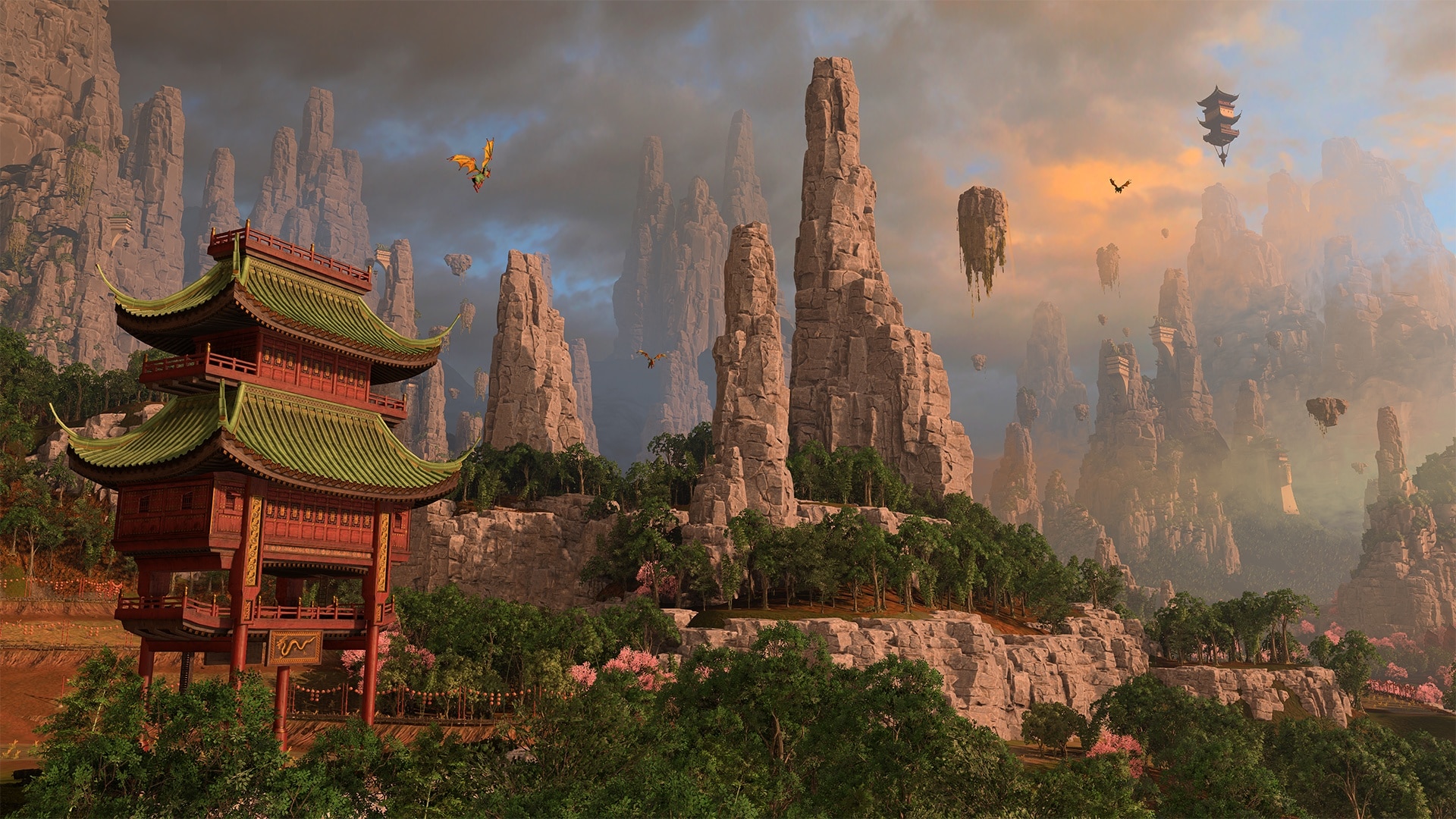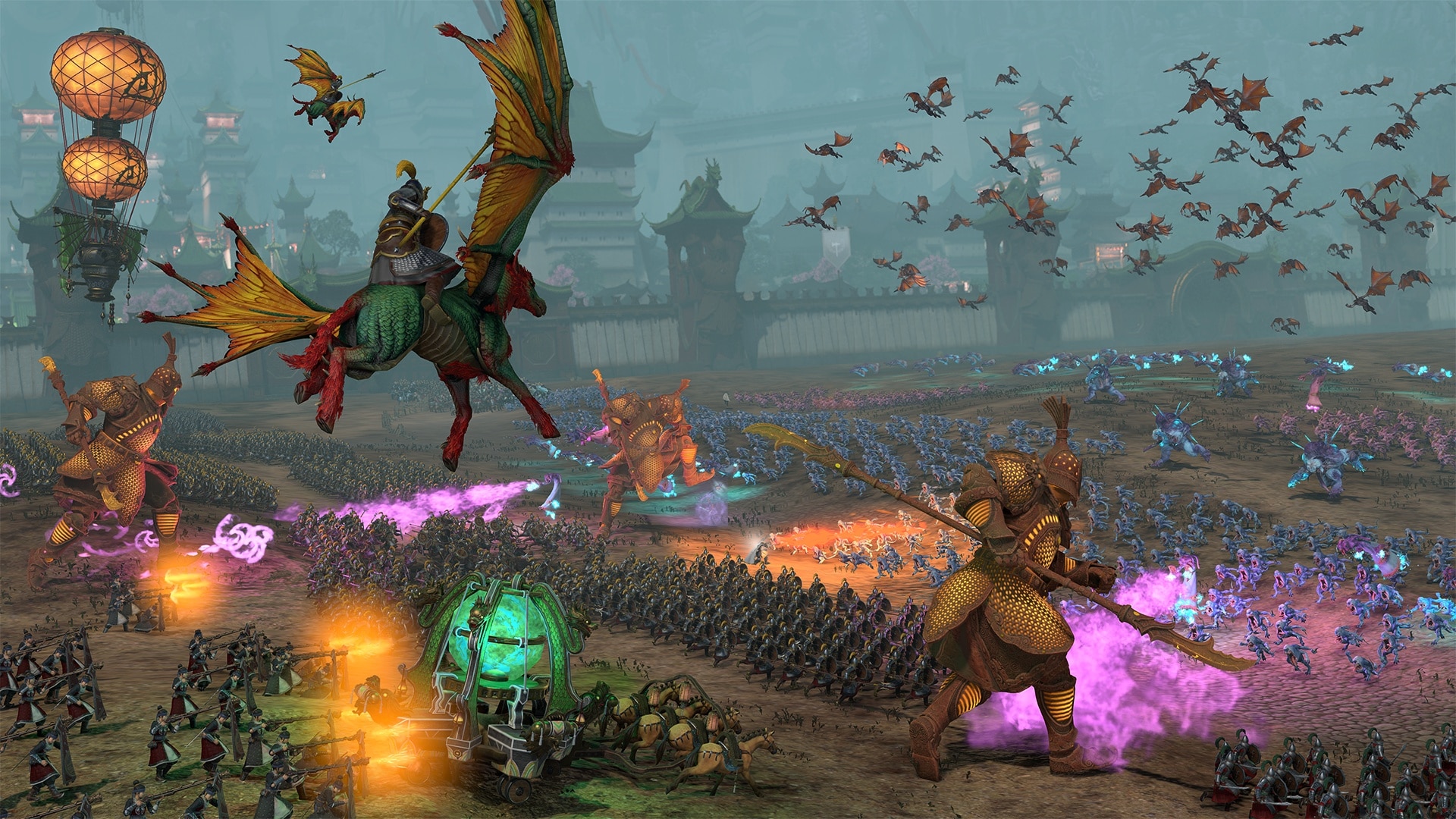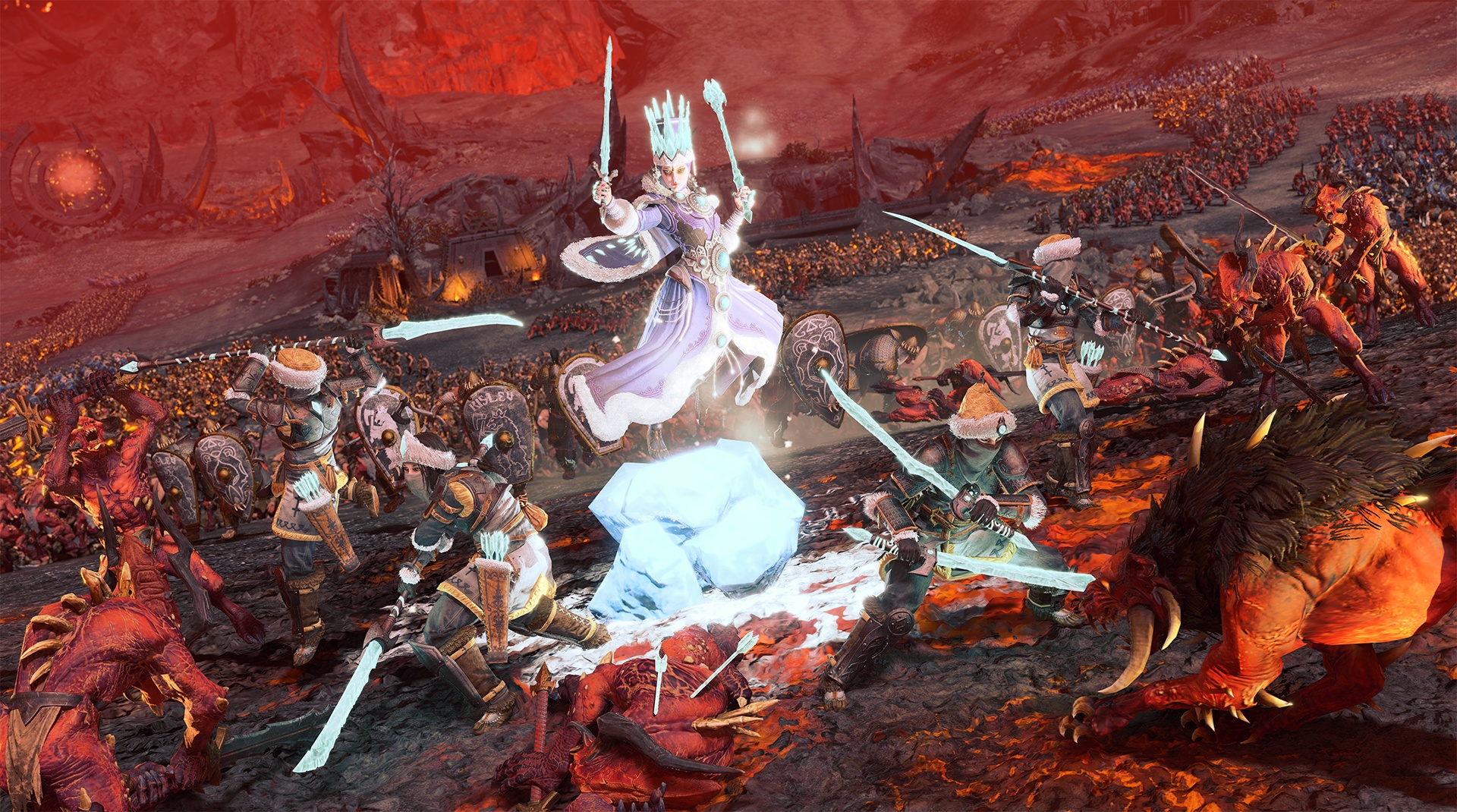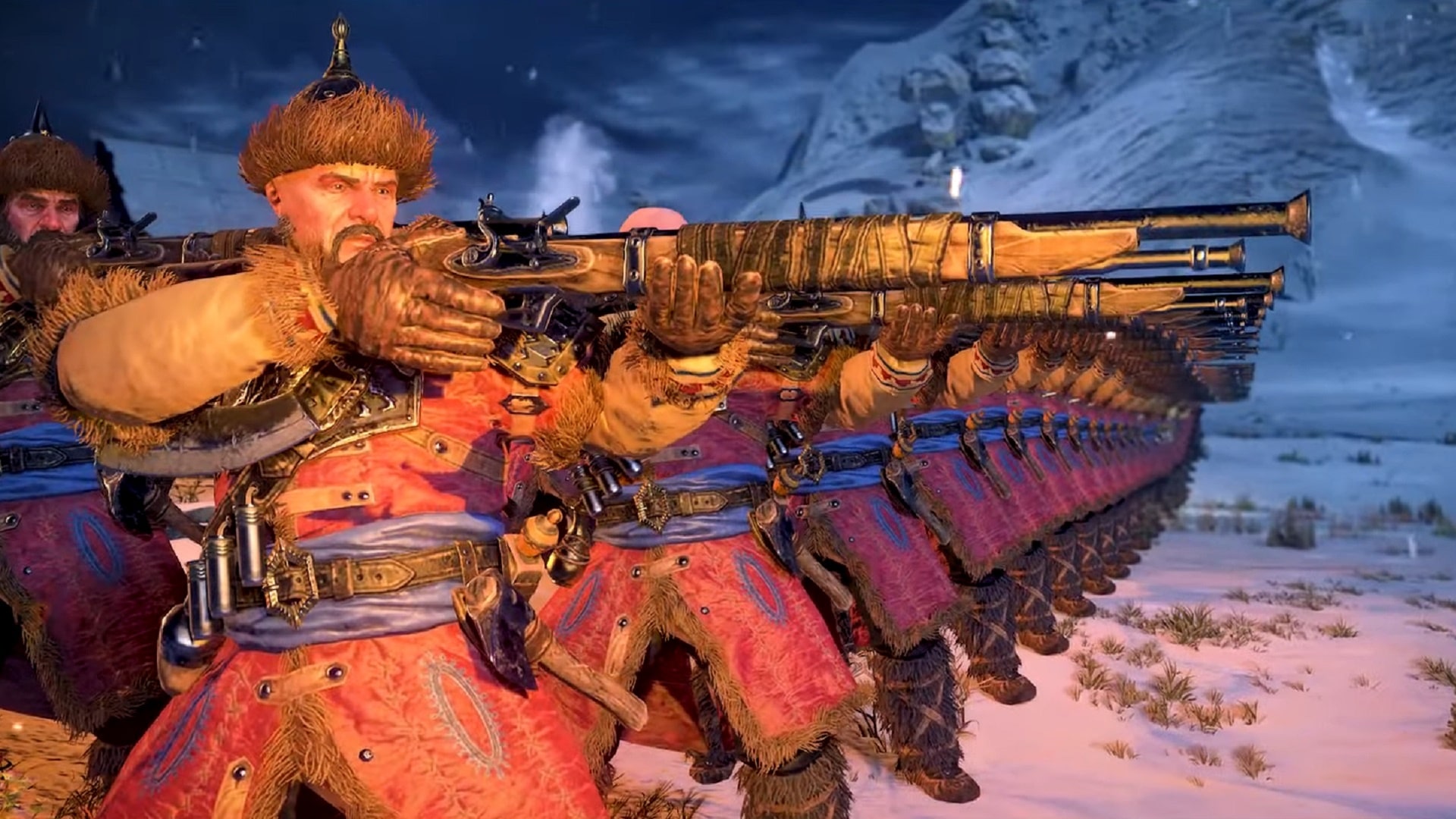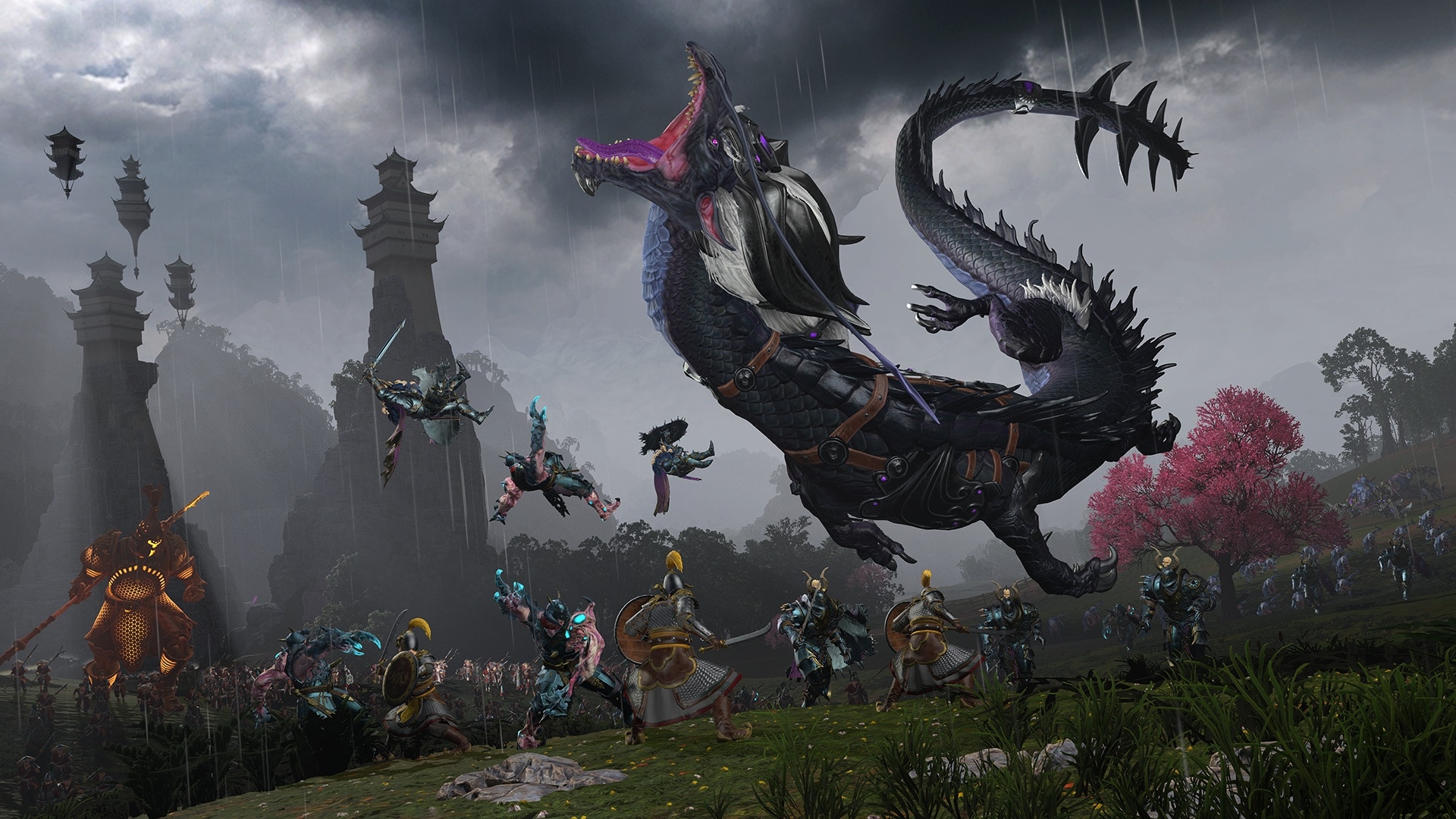Gameplay of the campaign map in Total War: Warhammer 3 is not yet available. But the developers have already revealed much about the factions.
Warhammer 3, the next Total War offshoot in Games Workshop’s fantasy universe, will be released in early 2022. As has become customary with Total War, the developers are focusing primarily on real-time battles during the unveiling. Whenever there is new gameplay, we see the admittedly always epic battles. For example, the new survival battles.
But Total War also consists of a turn-based campaign map, and there has hardly been anything of that so far. However, Creative Assembly has already revealed quite a lot about new game mechanics on the campaign map. In this article we summarise everything we already know about the campaign.
Table of Contents
General
The Story
Little is known about the story so far.
What we do know is this: The war against chaos will take on an important role. After all, more than half of the playable races also consist of Chaos factions. In addition, the new survival battles in the realm of chaos will appear without exception in the new campaign. So they are story events that do not exist in the Mortal Realms campaign. So the huge world map when you combine Warhammer 1, 2 and 3.
The map
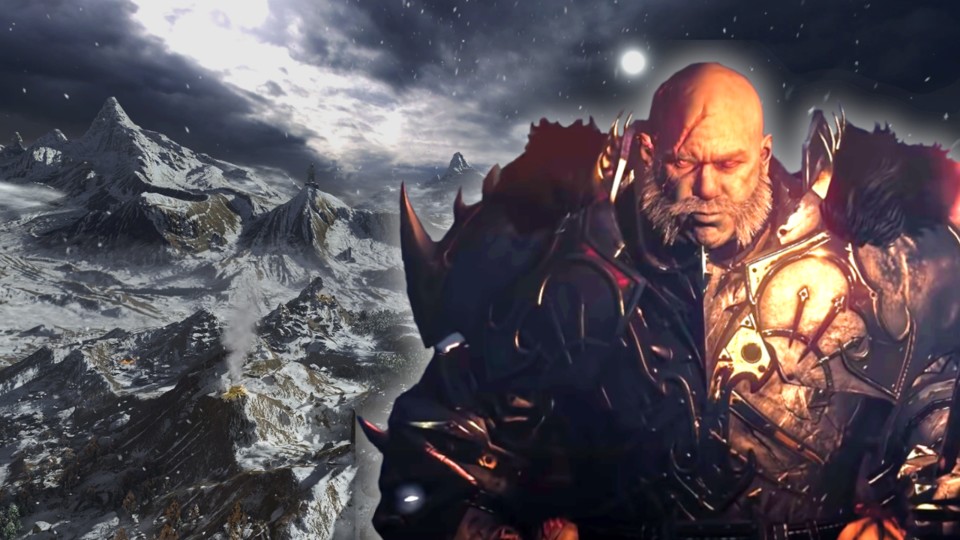
We haven’t been able to take a detailed look at the game map yet either. All we have seen of the new world map so far is a lone screenshot:
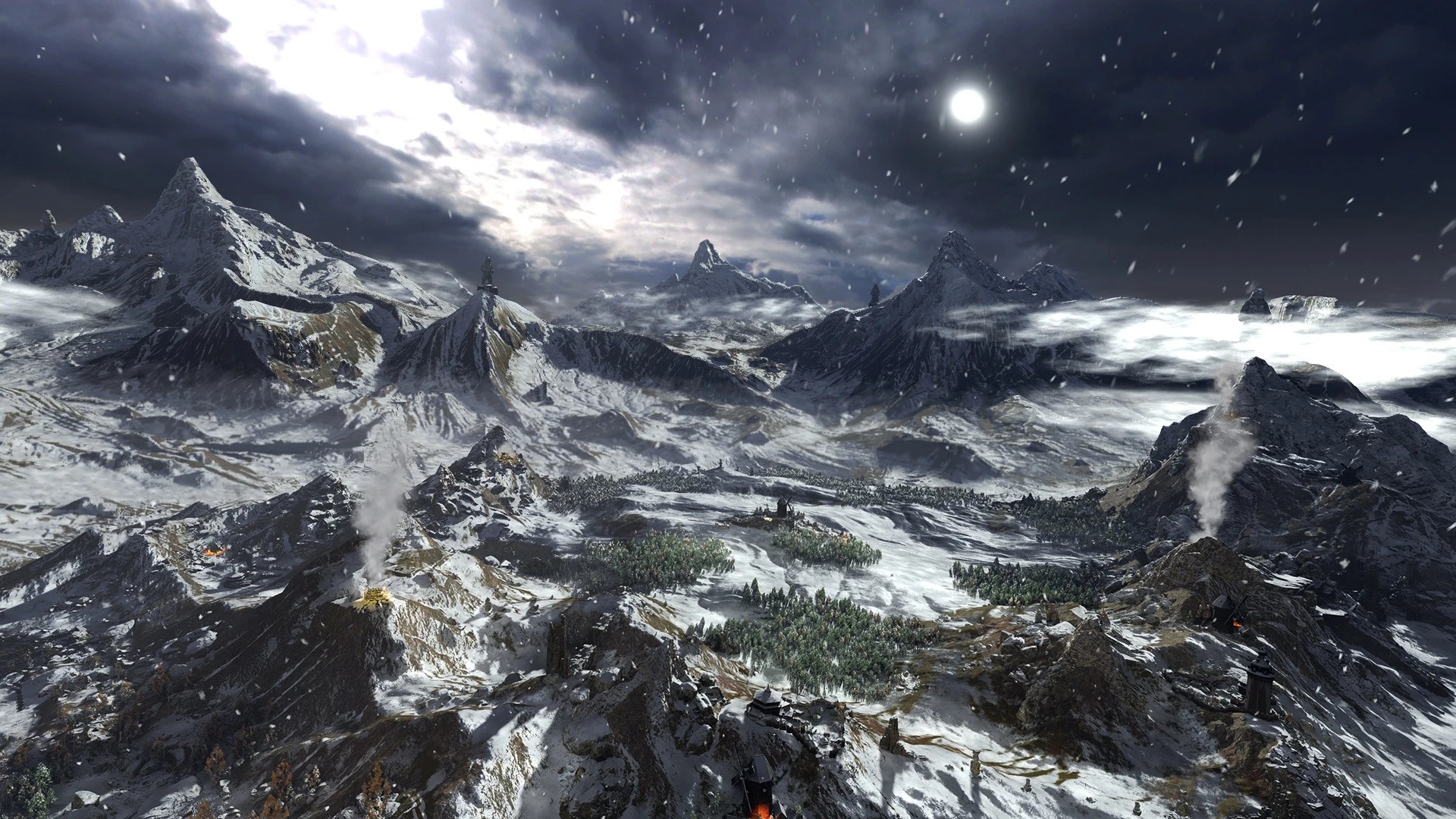
This looks cold. But pretty sure there will be many other regions where there will be less snow. After all, according to the developers, the map is supposed to be twice as big as the strategy map in Warhammer 2. And that was already very considerable.
There is no official view of the whole map. Only a small impression of the world map was given to us in the announcement trailer. Of course, there are maps of the entire Warhammer world independent of the Total War games. So we know what the countries in the east around Cathay look like. In the Total War forum, a user (added the known game map to the area in the east).
The Chaos World: This missing part of the world doesn’t exactly look twice as big as the world in the west. Possibly there will still be the Chaos Realm in some form in Total War: Warhammer 3. However, no one really knows yet what that might look like in practice.
The Chaos: The Gods Factions
Of the six new factions, four belong to the Chaos gods. Slaanesh, Nurgle, Tzeentch and of course Khorne. Up until now, Chaos has been more of a mindless Horde faction. But Chaos has many more facets that Warhammer 3 wants to emphasise.
This is evident not only in the number of units, but also in the way the factions play on the world map. There are similarities, but also glaring differences.
This is what the Chaos factions have in common
Unholy Manifestation: Chaos corruption can now have different effects. If land on the map is corrupted, it may be corruption explicitly assigned to one of the four gods. The more corruption of a certain god spreads, the more advantages there are for the faction.
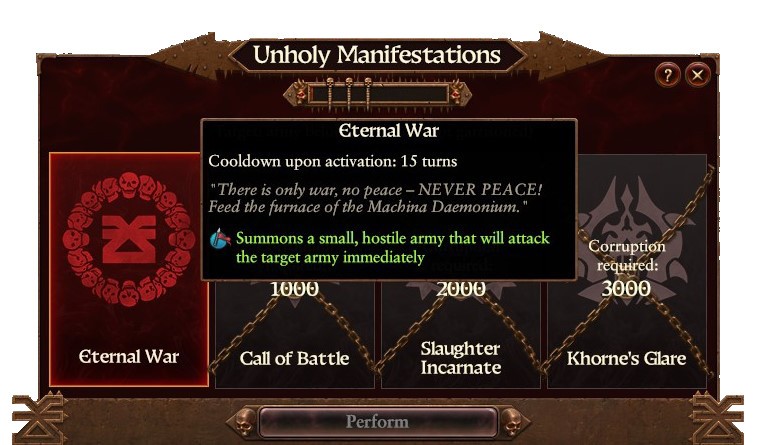
The abilities unlocked by this differ from chaos god to chaos god. While Tzeentch, the god of sorcery, can inflict losses on enemy armies and increase their magic reserves, Khorne, god of slaughter, sometimes creates armies that attack his own – which at least earns him skulls.
Cults: As soon as a chaos god becomes particularly dominant in a region, a cult can form around him. In game terms, this unlocks a building slot in foreign cities. We can therefore put our own buildings in it. Which buildings are available depends on the respective chaos god. As a rule, the buildings generate a special currency that each chaos god uses (skulls for Khrone, grimoires for Tzeentch).
Diplomacy: There is always war between the Chaos factions and the mortal races. Even the best diplomat in the world can’t change that. The only exceptions are the Skaven, Norsca, Beastmen and Warriors of Chaos. While Chaos factions can ally with each other, even that rarely happens. Khorne is particularly averse to alliances.
This distinguishes the Chaos factions
Khorne: The God of War coined famous exclamations like Skull for the Skull Throne and Blood for the Blood God. Both are also evident in his campaign mechanics. As a special currency, Khorne resorts to skulls, which are automatically left behind in battles. Khorne even collects skulls from battlefields in which his troops were not even involved. Adding many skulls to the Skull Throne unlocks bonuses such as better loot. Occupying a settlement also costs a large amount of skulls.
But if a settlement is razed, then the blood for the blood god option creates a free army with all movement points. This army cannot recruit, but should such an army also raze a settlement, another one is created. So this can cause a brutal domino effect. Khorne’s economy is also strengthened by these armies. Because the more armies the faction maintains, the greater the growth and reinforcement rate.
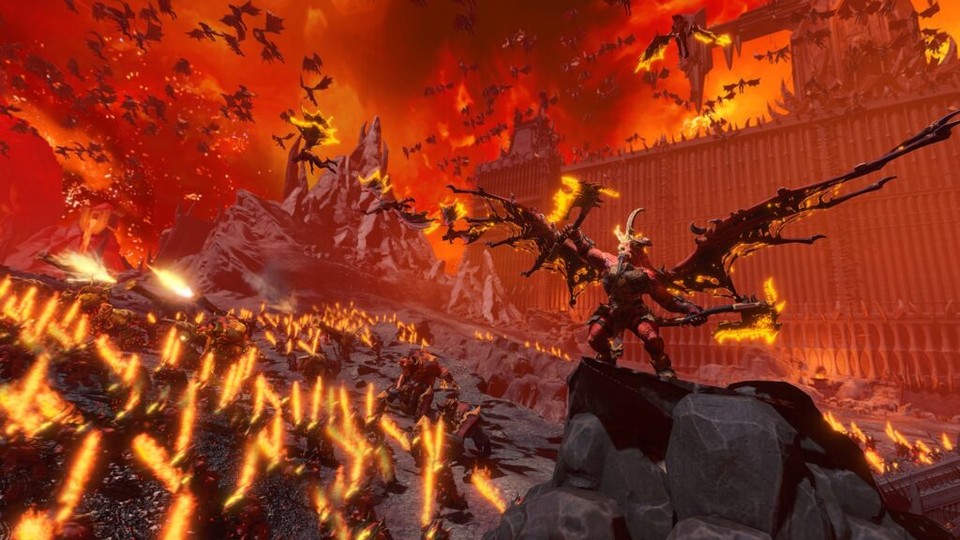
Tzeentch: As a unique currency Tzeentch collects so-called grimoires. These are spellbooks or forbidden texts that are generated after successful battles, sieges or by buildings. With these texts, Tzeentch can pay for very powerful effects. These include things like making a settlement change hands immediately, freezing all armies of a faction for a turn or forcing a rebellion.
Tzeentch relies more heavily on winds of magic for the effects of some buildings than any other faction. Fortunately, Tzeentch can direct these winds and, for example, weaken winds in one region to make them blow stronger elsewhere. The armies of Tzeentch also have a teleportation position. This allows them to jump over impassable terrain and immediately lure other armies into an ambush. However, the position must be unlocked.
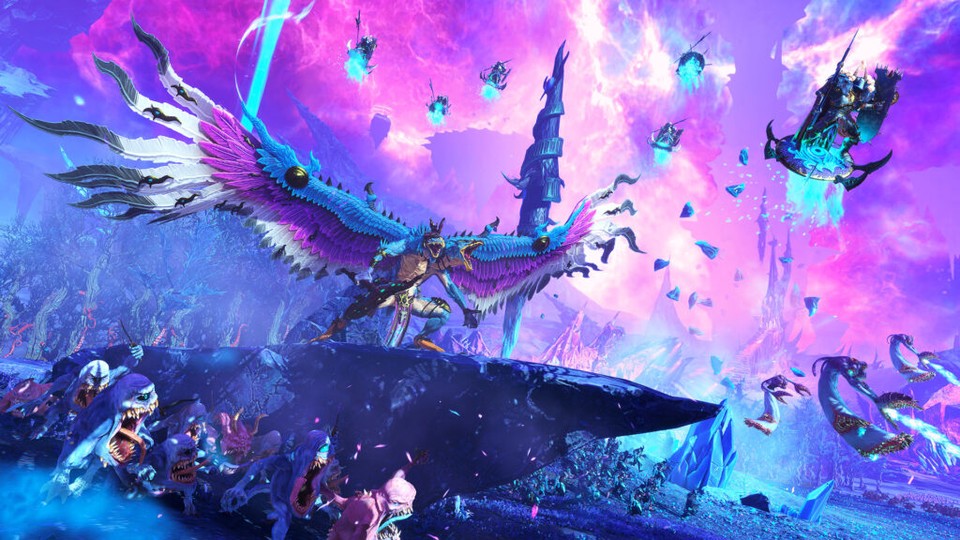
Slaanesh and Nurgle: No further details have been revealed about these two Chaos Gods. But at least we know that Slaanesh is the only chaos god who can make peace with mortals.
The Order: The Mortal Factions
There are two playable factions other than the Gods of Chaos. Cathay and Kislev. These factions share no overarching mechanics, aside from standards such as expanding settlements, using gold as a resource, and diplomacy. Like the other major factions, however, each mortal faction offers very specific campaign features:
Cathay
If you want to play with the powerful empire in the East, you will have to pay attention to four important elements on the strategy map. Harmony, the Wu-Xing Compass, the Great Bastion and the Sky Road. Cathay is always trying to maintain balance – and decisions can disrupt harmony. If the harmony bar tilts to the left or right, it causes unrest in the country and must be cleaned up. Buildings are also less effective.
With the (Wu-Xing Compass) magic can be directed to certain regions of Cathay. There are different bonuses depending on the region. However, all other of the four regions suffer passive disadvantages should the compass turn away. Via the skyway, Cathay can send caravans – an army that moves automatically. There may be random events that demand decisions or trigger battles. If the caravan reaches its destination, Cathay earns money.
(The Great Bastion) is a wall in the north of the country. It consists of three large gates that Cathay must defend. In the course of the game, hordes of chaos keep storming against the gates. If the threat of chaos drops to zero, there are special rewards. If the chaos breaks through, this weakens the faction. All three gates can be improved via a technology screen.
Kislev
Kislev already existed as an AI faction in the first Warhammer, but it was a variation of the Empire then. In Warhammer 3, it works quite differently. A new currency for Kislev is their faith Faith can be spent on certain buildings and strengthened by fighting Chaos. Those who act heretically and attack smaller Kislev factions lose faith. If there is little faith, a chaos invasion can occur.
Faith is also spent during special rituals in honour of the non-chaos gods. These gods are called Salyak, Dazh, Ursun and Tor. Depending on the god, different bonuses await. Salyak heals our troops, Dazh increases income, Ursun inflicts wear and tear on enemies and Tor increases the damage of soldiers.
Despite the common faith, however, Kislev is divided. There are two major factions that both want to rule. Tzarin Katarin and the Supreme Patriarch Kostaltyn. The factions do not declare war on each other, but gather followers. The more followers, the better the relationship with smaller factions. Moreover, at some point one faction can force the other to confederate.
In addition to normal commanders for armies, Kislev can train atamans – city rulers who can influence regions and cities and also rise in rank. As normal commanders, Kislev relies on ice witches and frost maidens. They cannot be recruited immediately, however, but undergo training for several rounds. During this time we decide which abilities they receive.
What do you think of the campaign mechanics in Warhammer 3? Let us know what you think in the comments!

